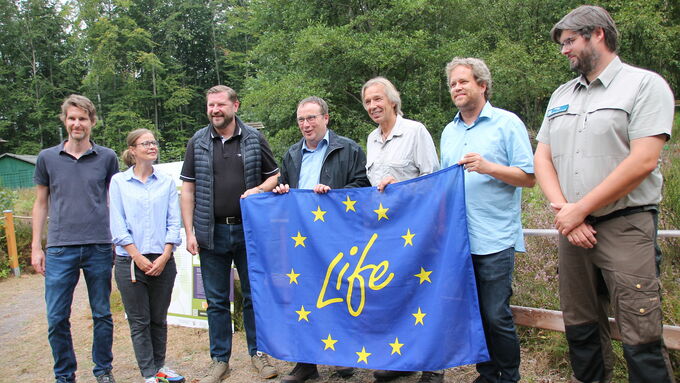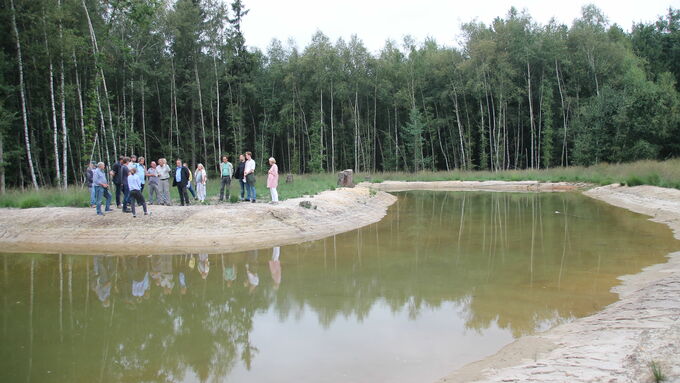The new pond created in 2021 for the Yellow-spotted Whiteface was also inspected during the excursion. © Anke Kottsieper, Biological Station ‘Mittlere Wupper’
main content
News
30.08.2022
Environment Minister Oliver Krischer visited LIFE IP actions in the SAC ‘Ohligser Heide’
On his summer tour on the state of biodiversity in North Rhine-Westphalia, Environment Minister Oliver Krischer last Friday (26th August) paid a visit to the LIFE IP Atlantic Region DE action sites in the ‘Ohligser Heide’ in Solingen.
On the heath nature trail, Dr Jan Boomers (Managing Director of the Biological Station ‘Mittlere Wupper’), Claudia Wackerl (Head of Department at the Lower Nature Conservation Authority of the City of Solingen) and Benjamin Klask (District Forester) received the Minister and his delegation as well as Solingen's Lord Mayor Tim Kurzbach and gave an overview of the background of the project. Afterwards, Dr. Boomers led a tour through the nature reserve and explained the implemented measures. "Bogs and bog woodland, like here in the nature reserve Ohligser Heide, are the basis for biodiversity in North Rhine-Westphalia. I would therefore like to thank the Biological Station ‘Mittlere Wupper’ for its tireless commitment and successful work in protecting the moorland and the habitat types," said Krischer.
Within the framework of the LIFE IP Atlantic Region DE, in the past years, non-native woody plants have been removed and the nutrient-rich topsoil stripped off on part of the areas in the Ohligser Heide in order to convert the areas to their original state with wet heath. Birch bog woodland is to be created on the remaining action areas. In addition, a new standing water body was created in 2021 on the edge of a complex of wet heath, birch swamp forest and small dystrophic water bodies on an area of about 800 square metres, which is to provide an optimal habitat for the Yellow-spotted Whiteface (Leucorrhinia pectoralis) that regularly flies into the area. The current drought is also clearly noticeable in the Ohligser Heide and threatens the water-bound plants and animals: The new water body is currently the only one that has not yet dried up and thus hopefully offers an important refuge in times of climate change.





